Is there truth to the saying “opposites attract”? Many people have wondered about the compatibility of individuals with opposite zodiac signs. Are these relationships destined for success or doomed to fail? In this article, we delve into the concept of opposite attraction and analyze the compatibility of opposite zodiac signs. We explore the nature of zodiac signs, the theories behind opposite attraction, and factors that influence compatibility. Through case studies and practical tips, we aim to shed light on the intriguing dynamics of opposite sign relationships. So, if you’ve ever pondered the compatibility of opposites, join us on this captivating journey through the world of astrology.
Contents
- What is Opposite Attraction?
- Understanding Zodiac Signs
- Theories Behind Opposite Attraction
- Examining the Compatibility of Opposite Zodiac Signs
- Case Studies
- Factors Influencing Compatibility
- Practical Tips for Opposite Sign Relationships
- Conclusion
-
Frequently Asked Questions
- What are the opposite zodiac sign pairs?
- Do opposite sign relationships always have a strong attraction?
- What are the similarities between opposite zodiac signs?
- What are the common challenges in opposite sign relationships?
- Can opposite sign relationships last long-term?
- How do rising and moon signs impact compatibility in opposite sign relationships?
- Are there any specific astrological aspects or configurations that indicate strong compatibility between opposite signs?
- Can opposite sign relationships bring balance to individuals’ lives?
- What are some practical tips for navigating opposite sign relationships?
- Are there any famous examples of opposite sign relationships?
- References
-
Frequently Asked Questions
- 1. How does opposite attraction manifest in relationships?
- 2. Are opposite zodiac signs more compatible than similar signs?
- 3. Is there a scientific basis for opposite attraction?
- 4. Can opposite zodiac signs face challenges in a relationship?
- 5. What are the benefits of being in an opposite attraction relationship?
- 6. Can opposite attraction lead to long-lasting relationships?
- 7. How do rising and moon signs influence compatibility in opposite attraction relationships?
- 8. Can compatibility between opposite zodiac signs change over time?
- 9. Are there any other astrological considerations to keep in mind in opposite attraction relationships?
- 10. How can individuals foster a successful opposite attraction relationship?
- References
- Read More
What is Opposite Attraction?
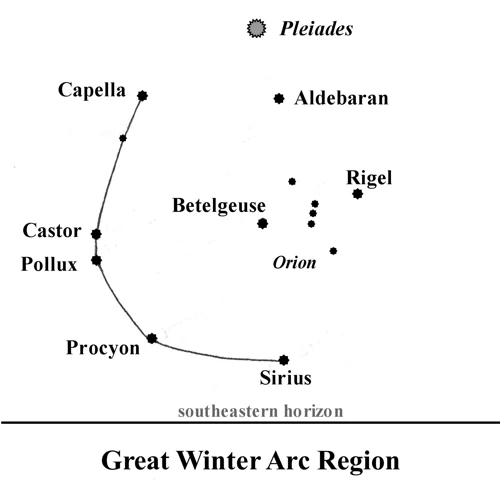
Opposite attraction refers to the phenomenon where individuals are drawn to those who possess traits and characteristics that are opposite to their own. It is the idea that in relationships, the differences between two people can create a strong magnetic pull. While some may argue that like-minded individuals make for better partners, opposite attraction suggests that complementary qualities can lead to a more fulfilling and balanced relationship. In the context of zodiac signs, opposite attraction refers to the compatibility between individuals with zodiac signs that are directly across from each other on the astrological wheel. These pairs are often referred to as “opposite sign pairs,” and their contrasting traits and energies can create a dynamic and intriguing connection. To better understand opposite attraction in astrology, it is crucial to explore the nature of zodiac signs, their elements, and how they interact with one another. The theories behind opposite attraction provide insights from both psychological and astrological perspectives, as well as the concept of the Law of Polarity. Are opposite sign relationships destined for success? Or do they come with their own set of challenges? The examination of compatibility between opposite zodiac signs will explore similarities, differences, common challenges, and complementary traits that play a role in these relationships. To get a broader perspective, we will also delve into real-life case studies of both successful and failed opposite attraction relationships, highlighting the factors that influenced their outcomes. Understanding the influence of rising and moon signs, aspects and configurations, as well as other astrological considerations, is essential when analyzing compatibility in opposite sign relationships. Finally, practical tips will be provided for those embarking on or currently in an opposite sign relationship, helping them navigate the unique dynamics and enhance the chances of a harmonious and fulfilling connection. So let’s explore the exciting world of opposite attraction in the realm of zodiac signs and uncover the mysteries behind this intriguing phenomenon.
Understanding Zodiac Signs
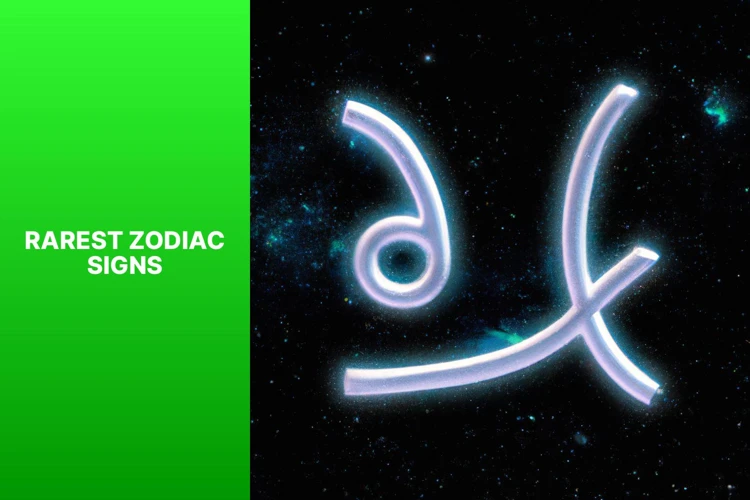
Zodiac signs play a significant role in astrology and are a crucial element in understanding opposite attraction. The zodiac is divided into twelve signs, each representing specific personality traits and characteristics. It is important to define zodiac signs and explore their elements to comprehend their role in opposite sign compatibility. The twelve signs can be categorized into four elements: fire, earth, air, and water. Fire signs (Aries, Leo, and Sagittarius) are known for their passion and ambition. Earth signs (Taurus, Virgo, and Capricorn) are grounded, practical, and reliable. Air signs (Gemini, Libra, and Aquarius) are intellectual and adaptable, while water signs (Cancer, Scorpio, and Pisces) tend to be intuitive and emotional. Opposite sign pairs, such as Aries and Libra or Taurus and Scorpio, have different elemental energies that can either clash or create a harmonious balance. Understanding the nature of zodiac signs and their elemental influences provides a strong foundation for exploring the compatibility of opposite signs. To deepen your knowledge about astrology and the role of rising signs, examining one’s natal chart is highly recommended as it provides a more comprehensive understanding of an individual’s astrological makeup.
Defining Zodiac Signs
Zodiac signs are an integral part of astrology and play a significant role in understanding and predicting personality traits and characteristics. There are 12 zodiac signs, each corresponding to a specific period of the year and symbolized by a unique symbol or glyph. These signs are Aries, Taurus, Gemini, Cancer, Leo, Virgo, Libra, Scorpio, Sagittarius, Capricorn, Aquarius, and Pisces. Each sign is associated with specific elements, ruling planets, and qualities. The four elements in astrology are fire, earth, air, and water, and each zodiac sign falls into one of these categories. Fire signs (Aries, Leo, Sagittarius) are passionate, bold, and energetic, while earth signs (Taurus, Virgo, Capricorn) are practical, grounded, and reliable. Air signs (Gemini, Libra, Aquarius) are intellectual, communicative, and social, while water signs (Cancer, Scorpio, Pisces) are emotional, intuitive, and sensitive. Understanding the elemental qualities of each zodiac sign is crucial in defining their overall nature and compatibility with other signs. Additionally, each zodiac sign is ruled by a specific planet, which influences their traits and behaviors. For example, Aries is ruled by Mars, giving them a competitive and adventurous nature, while Libra is ruled by Venus, making them lovers of beauty and harmony. The qualities associated with each zodiac sign further differentiate their characteristics. Cardinal signs (Aries, Cancer, Libra, Capricorn) are initiators and leaders, fixed signs (Taurus, Leo, Scorpio, Aquarius) are stable and focused, and mutable signs (Gemini, Virgo, Sagittarius, Pisces) are adaptable and flexible. By understanding and defining the various components of zodiac signs, we can gain insight into their fundamental nature and how they interact with other signs in matters of compatibility and attraction. For a more comprehensive understanding, it is beneficial to explore other aspects of astrology, such as rising signs and natal charts, which provide a more personalized analysis of an individual’s astrological makeup.
Exploring the Elements
The elements play a significant role in astrology, shaping the characteristics and energies of each zodiac sign. Exploring the elements is crucial to understanding the dynamics of opposite attraction in relationships. In astrology, the four elements – Fire, Earth, Air, and Water – represent different qualities and temperaments. Fire signs (Aries, Leo, Sagittarius) are passionate, energetic, and adventurous, symbolizing a fiery and dynamic nature. Earth signs (Taurus, Virgo, Capricorn) are grounded, practical, and reliable, embodying stability and sensibility. Air signs (Gemini, Libra, Aquarius) are intellectual, communicative, and social, representing the realm of ideas and relationships. Water signs (Cancer, Scorpio, Pisces) are emotional, intuitive, and nurturing, connecting with deep emotions and inner realms. Opposite attraction occurs when individuals from different elements come together, creating a harmonious balance between their qualities. Fire signs can ignite the passion and enthusiasm of their earth sign counterparts, while earth signs provide stability and grounding to the fiery energy. Air signs bring intellectual stimulation and social connections to the emotional water signs, while water signs offer depth and emotional support to the airy energy. Exploring the elements deepens our understanding of the contrasting qualities that attract individuals with opposite zodiac signs, creating a compelling and balanced dynamic in their relationships. So, understanding the elements is crucial when analyzing the compatibility of opposite sign pairs in astrology.
Nature of Opposite Zodiac Signs
The nature of opposite zodiac signs is characterized by their contrasting qualities and energies. Within the astrological wheel, each zodiac sign has an opposite sign that lies directly across from it. These opposite sign pairs are Aries-Libra, Taurus-Scorpio, Gemini-Sagittarius, Cancer-Capricorn, Leo-Aquarius, and Virgo-Pisces. The opposite signs share the same axis and complement each other in distinct ways. For example, Aries, known for its assertiveness and impulsiveness, finds its balance in the diplomatic and harmonious nature of Libra. Taurus, representing stability and practicality, is complemented by the transformative and intense energy of Scorpio. Gemini’s curiosity and adaptability are balanced by Sagittarius’ adventurous and philosophical nature. Cancer’s nurturing and emotional qualities find equilibrium in the practical and disciplined approach of Capricorn. Leo’s vibrant and passionate energy is counterbalanced by Aquarius’ unconventional and intellectual perspective. Lastly, Virgo’s analytical and detail-oriented nature complements Pisces’ intuitive and dreamy disposition. The opposite zodiac signs not only represent contrasting qualities but also different elements and modalities. This interplay between elements, such as fire, earth, air, and water, adds depth and complexity to their compatibility. Understanding the nature of opposite zodiac signs requires considering their individual strengths and weaknesses, as well as how they can balance and harmonize with one another. By exploring their unique qualities, traits, and energies, we can gain deeper insights into the dynamics of opposite sign relationships. So, let’s dive further into the world of astrology and unravel the mysteries of opposite attraction.
Theories Behind Opposite Attraction

Theories behind opposite attraction provide insights into the intriguing dynamics of why individuals are often drawn to those who possess traits and characteristics that are the opposite of their own. From a psychological perspective, the concept of “opposites attract” suggests that individuals may seek partners who possess qualities they lack or desire. This can create a sense of balance and harmony in a relationship. Astrologically, opposite attraction can be understood through the concept of polarities and the Law of Polarity. According to this perspective, opposite zodiac signs share a complementary energy that, when combined, can create a powerful and harmonious connection. Exploring the zodiac elements further enhances our understanding of opposite attraction, as each element brings its own unique qualities and energies. By understanding these theories, we can gain a deeper appreciation for the complexities and nuances of opposite sign relationships. To fully comprehend the impact of opposite attraction, it is essential to examine the compatibility between opposite zodiac signs and how their contrasting traits can create both challenges and opportunities for growth in a relationship. By recognizing these theories, individuals can navigate their opposite sign relationships with a greater sense of understanding and appreciation for the unique dynamics at play.
Psychological Perspective
From a psychological perspective, opposite attraction in relationships can be attributed to the concept of “complementarity.” This theory suggests that individuals are often attracted to those who possess traits and qualities that they lack or desire. Opposites attract because they offer each other a sense of completeness and balance. When two people with different personalities come together, they can bring out the best in each other by compensating for each other’s weaknesses. For example, an introverted individual may be attracted to an extroverted partner who can help them socialize and step out of their comfort zone. Similarly, an organized and structured person may be drawn to a more spontaneous and free-spirited partner who can add excitement to their life. This complementary dynamic can create a harmonious and balanced relationship where each partner fills in the gaps of the other’s personality. Additionally, opposite attraction can also lead to personal growth and self-reflection. Being with someone who possesses contrasting traits can challenge individuals to step outside their usual patterns of behavior and expand their horizons. It allows for new experiences and perspectives, fostering personal development and a deeper understanding of oneself. It is important to note that while opposite attraction can lead to a strong initial attraction, long-term compatibility requires effective communication, compromise, and a willingness to understand and appreciate each other’s differences. By embracing the unique qualities that attract them initially, partners can create a harmonious blend of contrasting traits, resulting in a fulfilling and balanced relationship. So, from a psychological perspective, opposite attraction in relationships can be seen as a way for individuals to find balance, growth, and personal fulfillment through the complementary qualities of their partners.
Astrological Perspective
The astrological perspective on opposite attraction provides insights into the compatibility of individuals with opposite zodiac signs. Astrology suggests that each zodiac sign carries specific traits, energies, and tendencies that influence how individuals interact with the world and each other. In the context of opposite attraction, astrologers believe that the contrasting qualities of opposite signs can create a harmonious balance in relationships.
Astrology considers opposite signs as complementary forces that bring out the best in each other. These pairs are typically associated with elements that are opposite as well, such as Fire and Air or Earth and Water. For example, the fiery nature of Aries may be complemented by the airy and intellectual energy of Libra. The grounded and practical nature of Taurus can find balance with the emotional and intuitive qualities of Scorpio.
Astrologers also analyze the placement of planets in each individual’s natal chart to determine compatibility. The positions of Venus (the planet of love and relationships) and Mars (the planet of passion and desire) are particularly important in assessing compatibility between opposite signs. Harmonious aspects between these planets can indicate a strong magnetic attraction, while challenging aspects may highlight areas of conflict that need to be addressed in the relationship.
Additionally, astrologers consider the house placement of each individual’s ruling planet. The houses represent different areas of life, and the placement of ruling planets can reveal compatibility in those particular areas. For instance, if one person’s ruling planet is in their partner’s house of communication, it may indicate a natural understanding and compatibility in that aspect of their relationship.
While astrology provides valuable insights into opposite attraction, it is important to remember that individual birth charts are unique, and compatibility extends beyond just the zodiac sign. Factors such as rising signs, moon signs, and other planetary configurations also play a significant role in determining the dynamics of a relationship. Understanding these nuances can provide a more comprehensive understanding of compatibility beyond just the astrological perspective.
So, by considering the astrological perspective and analyzing various elements within each individual’s birth chart, astrologers can offer valuable insights into the compatibility of individuals with opposite zodiac signs. This perspective allows for a deeper understanding of the dynamics and potential challenges that may arise in opposite attraction relationships. If you’re curious about exploring your own birth chart and understanding how it impacts your relationships, you can consult an astrologer or use online resources to generate your natal chart. Understanding the astrological perspective can add depth and insight to the exciting journey of opposite attraction.
The Law of Polarity
The Law of Polarity is a fundamental concept in various spiritual and philosophical traditions that suggests that everything in the universe has an opposite or complementary counterpart. This principle can be applied to the realm of zodiac signs and their compatibility as well. According to this law, opposite zodiac signs possess qualities and energies that are in direct contrast to one another, creating a balance and harmony when they come together. For example, the fiery and assertive nature of Aries can be balanced by the diplomatic and harmonious energy of Libra. Similarly, the practical and grounded nature of Taurus can complement the spontaneous and adventurous spirit of Sagittarius. This concept highlights the idea that opposite sign relationships have the potential to bring out the best in each partner by providing a counterbalance to their innate tendencies. It is important to note that the Law of Polarity does not dictate that every opposite sign relationship will be successful. Rather, it suggests that the dynamic interplay between opposing traits can lead to personal growth and the potential for a harmonious connection. By understanding and embracing the Law of Polarity, individuals in opposite sign relationships can navigate the challenges and appreciate the unique dynamics that such partnerships offer. To deepen your understanding of opposite sign relationships, it is beneficial to explore other astrological concepts such as rising and moon signs, aspects, and configurations, and their influence on compatibility. Understanding these factors can provide further insights into the dynamics of opposite attraction and help individuals navigate the complexities of their relationships.
Examining the Compatibility of Opposite Zodiac Signs
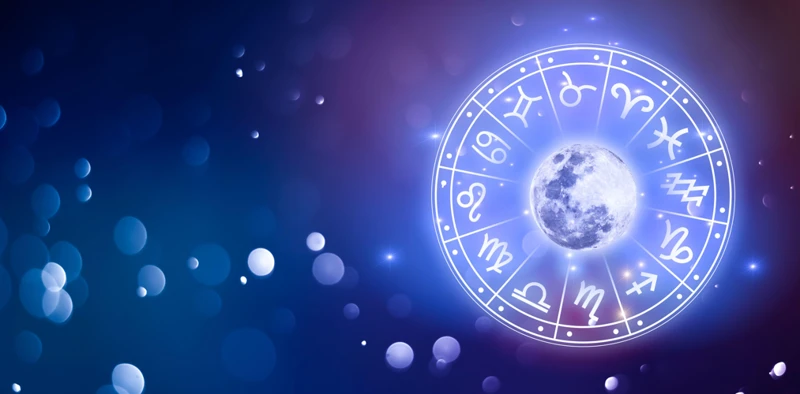
When it comes to examining the compatibility of opposite zodiac signs, it is important to consider the unique dynamics that arise from the pairing of complementary traits and energies. Opposite sign pairs, such as Aries-Libra, Taurus-Scorpio, and Gemini-Sagittarius, offer an intriguing blend of similarities and differences that can contribute to a balanced and harmonious relationship. While these pairs may have contrasting approaches and perspectives, they also bring complementary qualities to the table. The fire and air elements of Aries-Libra, for example, create a dynamic and passionate connection, while Taurus-Scorpio pairs the earth and water elements, forming a deep and intense emotional bond. While opposite sign relationships can bring about challenges by highlighting differences, they also provide opportunities for growth and learning as partners strive to understand and appreciate each other’s unique qualities. Understanding the complexities of these relationships involves exploring the similarities, differences, common challenges, and areas of compatibility between opposite zodiac signs. So, whether you’re curious about the dynamics of opposite sign relationships or seeking insight into the compatibility of your own zodiac sign with its opposite, this exploration will shed light on the intriguing world of opposite attraction within astrology.
Opposite Sign Pairs
Opposite sign pairs are zodiac signs that are positioned directly across from each other on the astrological wheel. These pairs have distinct characteristics that complement and contrast with one another, creating a unique dynamic in relationships. Here are the opposite sign pairs and their corresponding zodiac signs:
1. Aries (March 21 – April 19) and Libra (September 23 – October 22): Aries is known for being bold, independent, and impulsive, while Libra is diplomatic, harmonious, and seeks balance. This pair brings together the fiery energy of Aries with the diplomatic nature of Libra, creating a dynamic and balanced connection.
2. Taurus (April 20 – May 20) and Scorpio (October 23 – November 21): Taurus is grounded, reliable, and focused on sensual pleasures, while Scorpio is intense, transformative, and seeks deep emotional connections. This pairing combines stability with passion, creating a relationship that can be both stable and emotionally intense.
3. Gemini (May 21 – June 20) and Sagittarius (November 22 – December 21): Gemini is curious, adaptable, and loves communication, while Sagittarius is adventurous, optimistic, and seeks knowledge. These signs share a love for intellectual stimulation and exploration, making for a dynamic and intellectually fulfilling relationship.
4. Cancer (June 21 – July 22) and Capricorn (December 22 – January 19): Cancer is nurturing, emotional, and deeply intuitive, while Capricorn is determined, ambitious, and practical. This combination brings emotional depth and stability together, creating a partnership that balances emotional needs with practicality.
5. Leo (July 23 – August 22) and Aquarius (January 20 – February 18): Leo is confident, passionate, and loves to be in the spotlight, while Aquarius is independent, unconventional, and values freedom. This pair combines the flair and creativity of Leo with the individuality and uniqueness of Aquarius, resulting in a relationship that embraces both personal expression and collective ideals.
6. Virgo (August 23 – September 22) and Pisces (February 19 – March 20): Virgo is analytical, practical, and detail-oriented, while Pisces is compassionate, intuitive, and dreamy. This pairing brings together the practicality of Virgo with the emotional depth and sensitivity of Pisces, creating a balance between logic and intuition.
Each opposite sign pair has its own unique qualities and challenges, but they can create a harmonious balance by embracing and understanding their differences. By aligning their energies and leveraging their complementary traits, opposite sign pairs have the potential for deep and fulfilling connections. So, if you find yourself in a relationship with someone who has an opposite zodiac sign, embrace the possibilities and explore the fascinating dynamics that can unfold.
Similarities and Differences
When examining the compatibility of opposite zodiac signs, it is crucial to consider both the similarities and differences between the individuals involved. Despite the contrasting traits and energies, opposite sign pairs often share certain commonalities. These similarities can serve as a foundation for understanding and connecting with each other. For example, individuals belonging to opposite sign pairs may share the same element (fire, earth, air, or water), which can provide a sense of familiarity and understanding. While their expressions of the element may differ, the underlying qualities associated with it can create a sense of resonance between these individuals. Additionally, opposite sign pairs tend to have complementary qualities. One sign’s strengths may fill in the gaps or compensate for the weaknesses of the other sign. For instance, an Aries (fire sign) may bring passion and enthusiasm to a relationship, while their Libra counterpart (air sign) can provide balance and diplomacy. In terms of differences, opposite sign pairs possess distinct qualities that can create a dynamic and balanced union. These differences allow individuals to expand their perspectives, learn from one another, and grow personally and as a couple. While one sign may be more focused on individuality and assertiveness, the other may prioritize cooperation and harmony. The key to a successful opposite sign relationship lies in embracing and appreciating these differences, rather than viewing them as obstacles. By recognizing and celebrating the unique qualities each partner brings, opposite sign pairs can create a harmonious and enriching connection. Understanding the similarities and differences between opposite zodiac signs is essential in navigating the complexities of these relationships, allowing individuals to appreciate the strengths and challenges that come with such compatibility. So, while opposites may attract, it is through a blend of similarities and differences that these relationships can thrive and flourish.
Common Challenges
Common challenges can arise in opposite sign relationships due to the inherent differences between the individuals involved. While these challenges are not insurmountable, they require effort and understanding from both partners. Here are some of the common challenges that can arise:
1. Communication Styles: Opposite sign pairs often have contrasting communication styles. For example, an extroverted sign may prefer open and direct communication, while an introverted sign may lean towards introspection and thoughtfulness. This difference can lead to miscommunication and misunderstandings if not addressed. **Strong communication skills** and a willingness to understand and adapt to each other’s preferred communication patterns are crucial for navigating this challenge.
2. Values and Priorities: Opposite sign pairs may have different values and priorities in life. For instance, a sign focused on stability and security may clash with a sign driven by adventure and spontaneity. It is important to find a balance and respect each other’s values, as well as find common ground where both individuals can feel fulfilled. **Compromise** and **finding shared goals** can help overcome this challenge.
3. Conflict Resolution: Opposite sign relationships may encounter difficulties when it comes to resolving conflicts. One sign may prefer confrontation and addressing issues head-on, while the other may lean towards avoiding conflict and seeking harmony. Finding a middle ground and learning effective **conflict resolution skills** can help navigate disagreements and maintain a healthy relationship.
4. Energy Levels: Opposite signs often have different energy levels and ways of recharging. For example, a highly active sign may thrive on constant social interaction, while a more introverted sign may need alone time to recharge. Balancing these differing energy needs and finding ways to meet each other’s needs is essential for harmony in the relationship.
5. Personal Growth: Opposite sign relationships can challenge individuals to face their shadow aspects and work on personal growth. This can sometimes be uncomfortable and require **self-reflection** and **introspection**. It’s important to support each other’s personal journeys and provide a nurturing space for growth.
Navigating these challenges requires understanding, patience, and a commitment to the relationship. By recognizing and addressing these common challenges, opposite sign relationships have the potential to grow stronger and more balanced over time.
So, it’s essential for individuals in opposite sign relationships to be aware of these challenges and actively work towards overcoming them. By doing so, they can create a harmonious and fulfilling connection that embraces and celebrates their differences.
Complementary Traits
Complementary traits play a significant role in opposite sign relationships. While individuals with opposite zodiac signs may possess contrasting qualities, these differences often balance each other out and create a harmonious dynamic. One of the main reasons for the attraction between opposites is the ability to provide what the other person lacks. For example, if one person is more impulsive and spontaneous, their opposite sign partner may bring stability and practicality to the relationship. Similarly, someone who is more introverted may find their extroverted opposite sign partner helps them to socialize and step out of their comfort zone. The contrasting traits of opposite sign pairs can lead to a sense of completion and wholeness within the relationship. Each partner brings unique strengths and perspectives, creating a synergy that allows them to support and uplift one another. It’s vital to recognize and appreciate the complementary traits rather than viewing them as obstacles. By embracing and valuing each other’s differences, opposite sign couples can create a powerful bond that nurtures personal growth and deep connection. While these relationships might require some compromise and understanding, the potential for personal development and mutual growth is immense. So, if you find yourself in an opposite sign relationship, remember to celebrate the complementary traits that make your connection truly special.
Case Studies
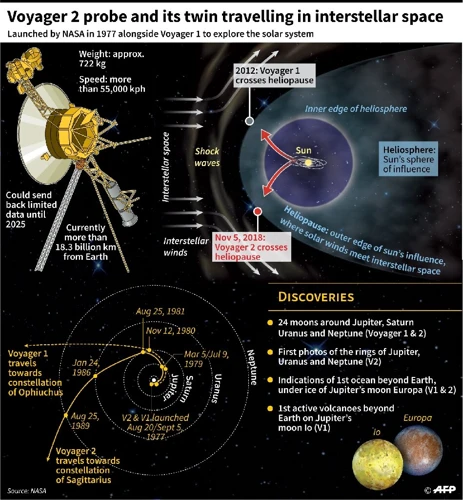
Case studies provide valuable insights into the dynamics of opposite attraction relationships and shed light on the varying outcomes that can occur. By examining real-life examples, we can better understand the complexities and nuances of these relationships. In successful cases, we witness how individuals with opposite zodiac signs have managed to create harmonious and fulfilling connections. These instances highlight the complementary traits and mutual growth that can be achieved when opposites come together. On the other hand, failed cases demonstrate the challenges and pitfalls that can arise in opposite sign relationships. They serve as cautionary tales, showcasing the importance of communication, compromise, and understanding in making such relationships thrive. Through these case studies, we gain a deeper appreciation for the factors that influence the success or failure of opposite attraction and learn valuable lessons for our own relationships. So, let’s delve into these fascinating stories and uncover the intriguing dynamics of opposite sign relationships.
Opposite Attraction Success Stories
Opposite attraction success stories provide real-life examples of how individuals with opposite zodiac signs can form strong and harmonious relationships. These stories highlight the compatibility and magnetism that can arise between individuals who possess contrasting traits and energies. One such success story is the case of Sarah and Michael. Sarah, a fiery Aries, and Michael, a balanced Libra, initially seemed like an unlikely match. However, their opposite traits allowed them to complement each other perfectly. Sarah’s assertiveness and passion were balanced by Michael’s diplomatic nature and desire for harmony. They found that their differences pushed them to grow and evolve both individually and as a couple. Despite occasional conflicts, their opposite sign pairing provided them with a unique opportunity for personal development and mutual understanding. Another example is the story of Jennifer, a practical and detail-oriented Virgo, and Mark, an adventurous and spontaneous Sagittarius. Despite their initial differences in approach to life, their opposite natures brought excitement and balance to their relationship. Jennifer’s grounding energy helped to stabilize Mark’s wanderlust, while Mark’s spontaneity injected adventure into Jennifer’s well-structured life. These success stories demonstrate that, with understanding, compromise, and a willingness to embrace each other’s differences, opposite attraction can lead to fulfilling and lasting relationships. It is important to note that individual experiences may vary, and compatibility in opposite sign pairs can depend on various factors such as rising and moon signs, aspects, and configurations. By considering these influences, individuals can navigate their relationships with awareness and create their own success stories in the realm of opposite attraction.
Opposite Attraction Failures
Opposite attraction can lead to both successful and unsuccessful relationships. While there are many success stories, it is important to acknowledge that not all relationships between opposite zodiac signs work out harmoniously. Understanding the reasons behind these failures can provide valuable insights into the dynamics of opposite attraction.
1. Clashing Values and Priorities: Despite the initial magnetism, individuals with opposite zodiac signs may have fundamentally different values and priorities in life. This misalignment can lead to constant conflicts and disagreements, making it challenging to sustain a long-term relationship. For example, a spontaneous and adventurous Sagittarius may clash with a practical and homebody Cancer, leading to frustration and dissatisfaction.
2. Communication Breakdowns: Opposite sign pairs often struggle with communication due to their contrasting communication styles and approaches. While one sign may be direct and assertive, the other may be more passive and indirect. These differences can result in misunderstandings and difficulties in expressing emotions and needs effectively. Poor communication can gradually erode the foundation of a relationship and lead to its downfall.
3. Emotional Disconnect: Opposite attraction may not always lead to a deep emotional connection. While individuals from opposite signs may be intrigued by each other’s differences initially, they may find it challenging to establish a strong emotional bond. This can result in feeling disconnected or unfulfilled in the relationship, leading to dissatisfaction and eventually, a breakup.
4. Incompatible Life Goals: Opposite attraction may bring together individuals with contrasting aspirations and life goals. For instance, a career-oriented and ambitious Capricorn may struggle to find common ground with a free-spirited and non-conformist Aquarius. These conflicting life goals can create tension and hinder the growth of the relationship.
5. Lack of Balance: While opposite sign pairs can possess complementary traits, finding a balance between these differences can be a constant challenge. A relationship that lacks balance can become one-sided, with one partner feeling overshadowed or neglected. Over time, this imbalance can lead to resentment and the eventual breakdown of the relationship.
It is essential to remember that every relationship is unique, and the success or failure of a relationship depends on various factors beyond zodiac compatibility. Factors such as individual maturity, willingness to compromise, and effective communication play significant roles in determining the outcome of an opposite attraction relationship. By understanding the potential pitfalls and challenges, individuals can approach opposite attraction relationships with a realistic perspective and work towards building a strong and lasting connection.
Factors Influencing Compatibility
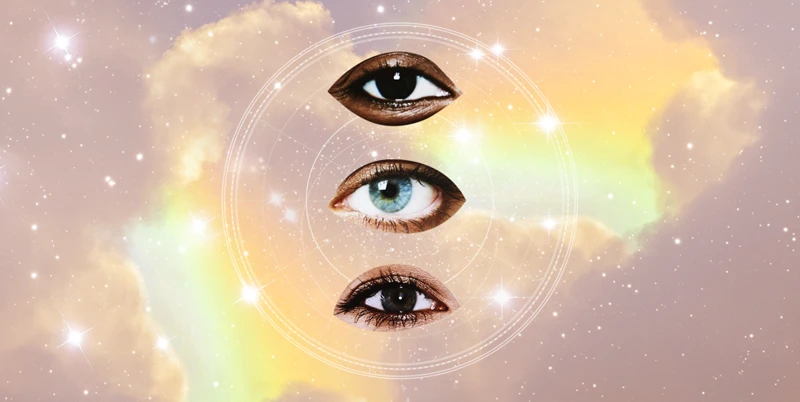
When it comes to compatibility in opposite sign relationships, there are several factors that can influence the dynamics and outcomes. One important factor to consider is the rising and moon signs of both individuals. These astrological placements offer deeper insights into a person’s personality, emotions, and overall compatibility with their partner. Additionally, aspects and configurations between the planets in each person’s natal chart play a significant role in determining the compatibility and interactions between opposite signs. These aspects can reflect the challenges, compatibility, and potential growth within the relationship. It is also important to take other astrological considerations into account, such as the positions of other planets and the influence of houses. These factors can provide a more comprehensive understanding of the compatibility between opposite zodiac signs and shed light on the potential strengths and weaknesses of the relationship. To explore these factors further and gain a deeper understanding of compatibility in opposite sign relationships, it is often beneficial to consult with an astrologer or refer to resources that provide valuable insights into astrology, such as /rising-sign-natal-chart/. By understanding and considering these various factors, individuals can navigate their opposite sign relationships with a greater awareness and hopefully establish a strong and harmonious connection.
Rising and Moon Signs
Rising and Moon signs are two crucial components in astrology that can significantly impact the compatibility and dynamics of opposite sign relationships. The Rising sign, also known as the Ascendant, represents the outer personality, the first impression others have of an individual, and the way they interact with the world. It plays a vital role in shaping one’s appearance, demeanor, and overall behavior. When it comes to opposite attraction, the Rising signs of two individuals can either harmonize or clash, influencing how they perceive each other and form a connection. Harmonious Rising sign matches may create instant chemistry, while contrasting Rising signs can lead to initial tension or intrigue. Additionally, the Moon sign represents one’s emotions, intuition, and deeper emotional needs. It governs how individuals express their feelings and the kind of emotional support they seek in a relationship. Opposite sign pairs with complementary Moon signs may have a natural understanding of each other’s emotional needs and provide the support and nurturing required for a harmonious union. However, conflicting Moon signs can bring about emotional conflicts and challenges in finding common ground. By considering the compatibility of Rising and Moon signs in opposite sign relationships, individuals can gain insight into the underlying emotional and behavioral dynamics that can either enhance or strain the connection. It is important to note that while Sun signs often receive the most attention, delving deeper into Rising and Moon signs adds a layer of complexity and richness to analyzing compatibility. So, if you want to uncover the significance of Rising and Moon signs in opposite sign relationships, be sure to explore these aspects of astrology further. For more in-depth information on other fascinating aspects of astrology, be sure to check out our article on exploring major gods and goddesses in Roman Mythology or southern hemisphere constellations and their legends.
Aspects and Configurations
Aspects and configurations play a significant role in analyzing compatibility between opposite zodiac signs. In astrology, aspects refer to the angular relationship between planets in a natal chart. Different aspects, such as conjunction, opposition, trine, square, and sextile, indicate various levels of harmony or tension between the planets involved. When examining opposite sign relationships, the opposition aspect is particularly relevant. This aspect occurs when two planets are approximately 180 degrees apart, creating a tension that can manifest either as conflict or as a complementary balancing force.
Opposite sign pairs often have planets in opposition within their respective natal charts, further emphasizing the contrasting energies between them. For example, a person with an Aries Sun might have their Sun in opposition to a Libra Sun, creating a dynamic interplay between their assertive and diplomatic natures. This opposition can lead to a push-and-pull dynamic within the relationship, as the individuals navigate their differing needs and approaches. However, this tension can also serve as a catalyst for growth and provide an opportunity for personal development for both individuals.
In addition to aspects, the configurations formed by planets in a natal chart can offer valuable insights into opposite sign compatibility. For instance, a Grand Trine configuration involving planets in opposite signs can create a harmonious flow of energy between the individuals. This configuration fosters a sense of ease and understanding between the opposite sign partners, allowing for a smooth integration of their opposing qualities.
On the other hand, a T-Square configuration involving planets in opposite signs can present challenges and require conscious effort to balance conflicting energies. This configuration can result in power struggles, but with awareness and effective communication, the individuals can learn to navigate these tensions and find resolution.
Aspects and configurations provide a deeper understanding of the dynamics within opposite sign relationships. They highlight both the potential areas of conflict and the opportunities for growth and balance. Analyzing these astrological aspects and configurations can help individuals in opposite sign relationships navigate challenges and capitalize on the unique synergy between their contrasting qualities.
Other Astrological Considerations
When examining compatibility in opposite sign relationships, it is important to consider several other astrological factors that can influence the dynamics between individuals. These additional considerations provide deeper insights into the overall compatibility and dynamics of the relationship. Here are some key factors to take into account:
1. Aspects and Configurations: The aspects formed between the planets in each person’s natal charts can greatly impact the compatibility of opposite sign relationships. Harmonious aspects, such as trines and sextiles, can facilitate smooth and supportive interactions, while challenging aspects, like squares and oppositions, may create tension and conflicts that need to be addressed and resolved. It is essential to analyze the aspects between the personal planets (such as the Sun, Moon, Mercury, Venus, Mars) and outer planets (like Uranus, Neptune, and Pluto) to have a comprehensive understanding of the relationship dynamics.
2. House Overlays: The house overlays in each person’s natal chart can provide valuable insights into the areas of life that are likely to be most affected by the opposite sign relationship. For example, if one person’s Sun falls in the 7th house of their partner’s chart, it suggests that partnership and relationships play a significant role in their life together. By analyzing the house position of key planets and points, such as the Ascendant (rising sign), Descendant, and Midheaven, a deeper understanding of the relationship dynamics can be gained.
3. Planetary Retrogrades: Retrograde planets in a person’s natal chart can bring unique energies and challenges to the relationship. When analyzing compatibility in opposite sign relationships, it is important to consider if any planets are retrograde and how these retrogrades may influence the individual’s expression of their opposite sign qualities. For example, a person with a retrograde Venus in Aries may have challenges in expressing their assertiveness and independence, which could potentially affect their dynamic with a partner whose Sun sign is Libra, the opposite sign.
4. Synastry and Composite Charts: In addition to analyzing individual natal charts, synastry and composite charts provide further insights into the compatibility of opposite sign relationships. Synastry compares the placements of each person’s planets to determine how they interact and influence each other. The composite chart combines the midpoints of each person’s planetary positions to create a single chart representing the essence of the relationship. These charts can reveal the strengths, challenges, and overall compatibility between the individuals involved.
By considering these other astrological factors, a more comprehensive analysis of opposite sign relationships can be achieved. The aspects and configurations between planets, house overlays, planetary retrogrades, and synastry/composite charts all contribute to the unique dynamics and compatibility of these relationships. Understanding and working with these astrological considerations can provide valuable insights and guidance for navigating the complexities and nuances of opposite sign relationships.
Practical Tips for Opposite Sign Relationships
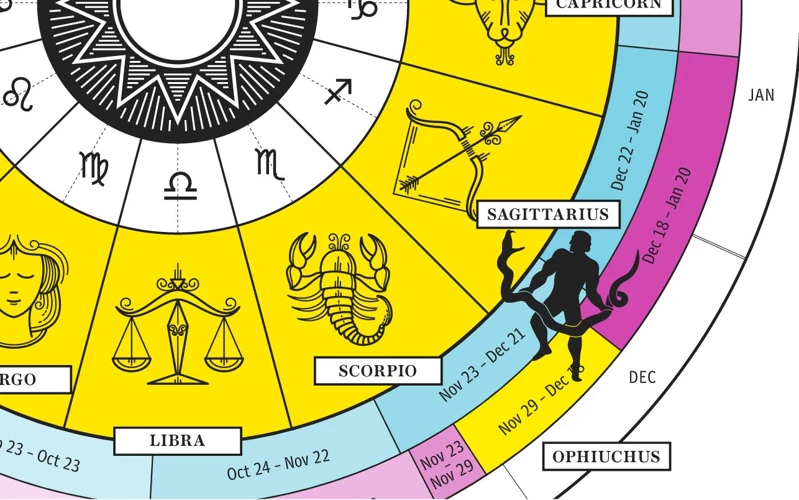
Navigating opposite sign relationships can be both exciting and challenging. To help foster a harmonious and fulfilling connection, here are some practical tips to keep in mind:
1. Embrace Differences: Opposite sign relationships thrive on the unique qualities that each partner brings to the table. Instead of viewing these differences as obstacles, embrace them as opportunities for growth and learning. Celebrate the diverse perspectives and approaches that you both bring to the relationship.
2. Communication is Key: Clear and open communication is vital in any relationship, and this holds true for opposite sign partnerships as well. Take the time to understand each other’s viewpoints and communicate your needs and preferences effectively. Find a balance between assertiveness and understanding, ensuring that both partners feel heard and valued.
3. Find Common Ground: While you may have contrasting traits and interests, seeking common ground is crucial for building a strong foundation. Discover activities or hobbies that you both enjoy and make time for shared experiences. This will help create a sense of unity and strengthen your bond.
4. Respect Each Other’s Boundaries: Opposite sign relationships often highlight differences in personal boundaries and preferences. It’s essential to respect each other’s boundaries and establish clear boundaries within the relationship. Be mindful of each other’s comfort zones and communicate openly about what feels acceptable and what doesn’t.
5. Seek Compromise: Opposite sign relationships may encounter challenges when it comes to decision-making or conflict resolution. To navigate these situations successfully, be willing to seek compromise and find middle ground. Remember that healthy compromise is about finding solutions that work for both partners, rather than giving in completely or dominating the decision-making process.
6. Embrace Growth and Learning: Opposite sign relationships have the potential for personal and spiritual growth. Embrace the opportunity to expand your horizons, challenge your assumptions, and expand your understanding of the world. Be open to learning from your partner’s perspective and use it as a catalyst for your own personal evolution.
7. Seek Support and Guidance: Seeking support from trusted friends, family, or even professional counselors can be immensely beneficial in navigating the complexities of opposite sign relationships. They can provide valuable insights, advice, and objective perspectives that can help you navigate challenges and strengthen your bond.
Remember, every relationship is unique, and while opposite sign relationships may have their own specific dynamics, they can also be incredibly rewarding. By embracing the differences, communicating effectively, and nurturing mutual respect, you can build a strong and fulfilling partnership with your opposite sign counterpart.
Conclusion

In conclusion, opposite attraction in the realm of zodiac signs is a fascinating concept that holds both psychological and astrological significance. While there are differing opinions on whether opposites truly attract, it is clear that there is a unique dynamic that can exist between individuals with opposite zodiac signs. The contrasting traits and energies of these pairs can create both compatibility and challenges in relationships. Through case studies, we have seen successful and failed opposite attraction relationships, highlighting the importance of various factors such as rising and moon signs, aspects and configurations, and other astrological considerations. It is crucial to keep in mind that astrology provides insights and guidance, but it does not determine the outcome of relationships. Ultimately, the success or failure of an opposite sign relationship depends on the individuals involved and their willingness to understand, accept, and work through their differences. With practical tips and a willingness to communicate and compromise, individuals in opposite sign relationships can enhance their chances of a harmonious and fulfilling connection. Opposite attraction is a captivating aspect of human relationships that reminds us of the complexity and beauty of human connection. So, whether you find yourself drawn to someone with an opposite zodiac sign or are simply intrigued by the dynamics of these relationships, embracing the exploration of opposite attraction can lead to a deeper understanding of ourselves and the people we connect with.
Frequently Asked Questions

What are the opposite zodiac sign pairs?
The opposite zodiac sign pairs are Aries and Libra, Taurus and Scorpio, Gemini and Sagittarius, Cancer and Capricorn, Leo and Aquarius, and Virgo and Pisces.
Do opposite sign relationships always have a strong attraction?
While there is often a strong attraction in opposite sign relationships, it ultimately depends on the individuals involved. Other factors, such as personal compatibility and shared values, play a significant role as well.
What are the similarities between opposite zodiac signs?
Opposite zodiac signs often share similar core values and desires, but their approaches to life and expression of those values may differ greatly.
What are the common challenges in opposite sign relationships?
Common challenges in opposite sign relationships include conflicting communication styles, differences in priorities, and clashes in how they handle emotions and decision-making.
Can opposite sign relationships last long-term?
Opposite sign relationships can absolutely last long-term. Like any relationship, it depends on the individuals’ commitment, willingness to compromise, and ability to understand and appreciate one another’s differences.
How do rising and moon signs impact compatibility in opposite sign relationships?
Rising and moon signs can provide additional insights into an individual’s personality and emotional needs, which can greatly impact compatibility in opposite sign relationships. Compatibility between these signs will vary depending on the specific placements within the natal charts.
Are there any specific astrological aspects or configurations that indicate strong compatibility between opposite signs?
There are several aspects and configurations that can indicate strong compatibility between opposite signs, such as the conjunction, trine, and sextile aspects. However, the overall compatibility is influenced by multiple factors, and individual birth charts should be considered as a whole.
Can opposite sign relationships bring balance to individuals’ lives?
Yes, opposite sign relationships can bring balance to individuals’ lives by exposing them to different perspectives, teaching them to compromise, and helping them grow by embracing qualities that are different from their own.
Some practical tips for navigating opposite sign relationships include open communication, embracing compromise, appreciating one another’s strengths, finding common ground, and understanding that differences can be celebrated and learned from.
Are there any famous examples of opposite sign relationships?
Yes, there have been famous examples of opposite sign relationships, such as Brad Pitt (Sagittarius) and Jennifer Aniston (Aquarius), and David Beckham (Taurus) and Victoria Beckham (Aries).
References
- When Astrological Opposites Attract: Can It Work?
- Opposite Zodiac Signs Attract: Detailed Analysis Of 6 Pairs
Frequently Asked Questions

1. How does opposite attraction manifest in relationships?
Opposite attraction in relationships often manifests as a balance between opposing qualities and traits. It can bring together individuals who have different strengths and weaknesses, creating a complementary dynamic.
2. Are opposite zodiac signs more compatible than similar signs?
Opposite zodiac signs can have a unique compatibility due to the complementarity of their qualities. While similar signs can also have compatibility, the contrasting nature of opposite signs can provide a stronger attraction.
3. Is there a scientific basis for opposite attraction?
Opposite attraction is not solely based on scientific evidence but can be explored through psychological and astrological perspectives. These perspectives offer insights into the dynamics of relationships and the attraction between opposites.
4. Can opposite zodiac signs face challenges in a relationship?
Yes, opposite zodiac signs can face challenges in a relationship due to their contrasting nature. These challenges may arise from differences in communication styles, values, and approaches to life. However, if both partners are willing to understand and embrace these differences, they can find a way to navigate and grow together.
5. What are the benefits of being in an opposite attraction relationship?
Being in an opposite attraction relationship can bring several benefits. It can broaden one’s perspective, promote personal growth, and encourage individuals to step out of their comfort zones. The contrasting qualities of opposites can create a more balanced and harmonious relationship.
6. Can opposite attraction lead to long-lasting relationships?
Opposite attraction can indeed lead to long-lasting relationships. The key lies in the willingness of both partners to understand, appreciate, and support each other’s differences. By embracing and respecting the contrasting qualities, opposites can form strong bonds and build lasting relationships.
7. How do rising and moon signs influence compatibility in opposite attraction relationships?
Rising and moon signs play a significant role in determining compatibility in relationships. These signs represent different aspects of an individual’s personality and emotional nature. The alignment or mismatch of rising and moon signs between two individuals can impact the overall compatibility of their opposite attraction relationship.
8. Can compatibility between opposite zodiac signs change over time?
Yes, compatibility between opposite zodiac signs can change over time. As individuals grow and evolve, their desires, values, and priorities may shift. It is important for partners to continually communicate and adapt to these changes to sustain a healthy and fulfilling relationship.
9. Are there any other astrological considerations to keep in mind in opposite attraction relationships?
Apart from rising and moon signs, other astrological considerations such as planetary aspects and configurations can influence the dynamics of opposite attraction relationships. These aspects reveal deeper insights into the strengths and challenges that may arise between partners.
10. How can individuals foster a successful opposite attraction relationship?
To foster a successful opposite attraction relationship, individuals can focus on open communication, mutual respect, and understanding. Embracing each other’s differences and seeking common ground can contribute to a harmonious and fulfilling partnership.
References
- Here’s The Reason Why You Should Date Your Polar …
- Opposite Zodiac Signs Attract: Detailed Analysis Of 6 Pairs
- Sister Sign Compatibility: Can Opposites Really Attract?







